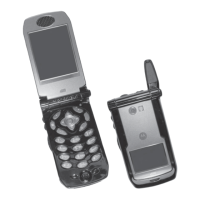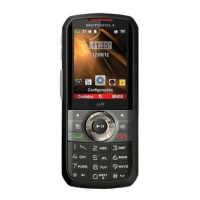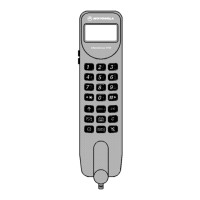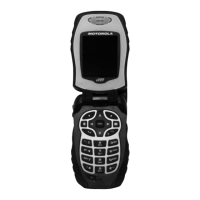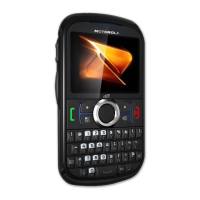OVERVIEW: iDEN Digital Modulation Technology
Portable Unit
When turned on, scans for control station, then transmits one slot every six slots.
Figure 1 iDEN TDMA Format
1.2 iDEN Voice Compression Technology
Voice is converted into a digital bit stream by sampling the voice signal at a high rate and
converting the samples into numbers, which are represented by bits. A sample consists of 8 bits.
Approximately 8000 samples per second (64 Kbps) are required to maintain a reasonable quality.
Voice compression reduces the number of bits per second while maintaining the voice at an
acceptable quality level. The iDEN system uses a coding technique called Vector Sum Excited
Linear Prediction (VSELP) to compress voice to 4.2 or 8.0 Kbps. The compressed voice-data bits
modulate the RF signal. The compression rate is based on the type of call (dispatch or interconnect)
and the network configuration established by the local service provider.
Adding error-correction bits to the coded-voice bits increases the required RF-transmission bit rate
to approximately 7.4 Kbps for the 4.2 Kbps voice coder and 14.8 Kbps for the 8.0 Kbps voice
coder.
1.2.1 RF Transmission Bursts
RF transmissions within an iDEN system occur in 15 millisecond blocks called bursts. An iDEN
base station transmits bursts continuously on each RF frequency it uses. Transmission bursts from
the stations are synchronized in time by signals received from the global positioning satellite
(GPS) system. Each burst is numbered; the number is referred to as the slot number. All bursts
occurring at a given time carry the same slot number..
Inbound transmission bursts (sent from the unit) are offset 19 milliseconds from the outbound
burst; the inbound burst begins 4 milliseconds after the end of the outbound burst (see Figure 1-2
on page 3). This offset in time allows the unit to appear capable of transmitting and receiving at
the same time (it actually is switching rapidly back and forth between receiving and transmitting).
In current iDEN systems, outbound transmissions in the 800 MHz band range from 851-870 MHz;
inbound transmissions are 45 MHz lower in frequency. For the 900 MHz band, outbound
transmissions range from 935-940 MHz; inbound transmissions are 39 MHz lower in frequency.
.

